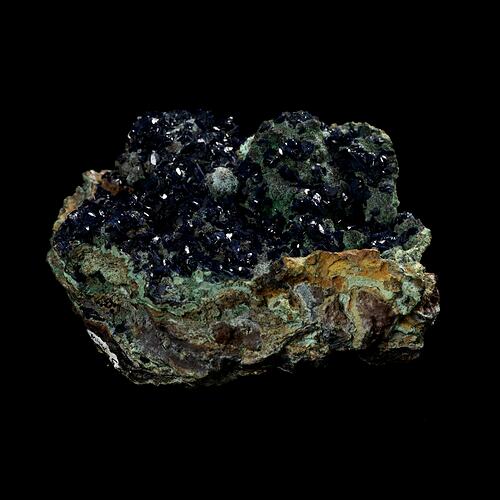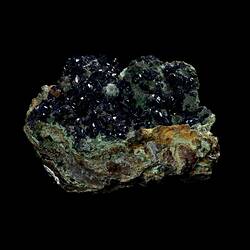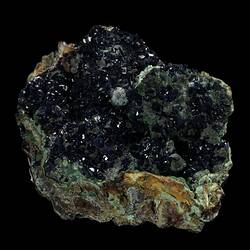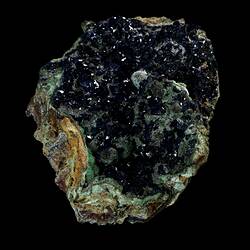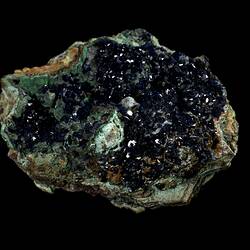Summary
Although not common, azurite is found around the world, including in the USA, Mexico, Namibia, Russia and Australia. This specimen came from Bisbee, Arizona, in the USA, a site known for its large, well-formed crystals.
The name Azurite comes from its deep azure blue colour. Is was once called chessylite as it was first described from Chessy-les-Mines in France. Its beautiful colour has led to it being used for thousands of years to make pigments and as a gemstone, though it is rather too soft for a gem.
Azurite is a copper mineral formed from the weathering of copper sulphide ore deposits. It is made up of copper, carbon, oxygen and hydrogen. Acidic water dissolves copper out of the ore then later azurite precipitates out from the water. This precipitation usually occurs within fractures below ground, leading to the formation of veins of azurite. Azurite is often found with malachite, another copper carbonate mineral that is bright green.
Specimen Details
-
Collection Names
-
Specimen Nature
Form: Hand Specimen(s)
-
Species
-
Group
-
Class
-
Associated Matrix
Malachite
-
Category
-
Scientific Group
-
Discipline
-
Collecting Areas
-
Type of Item
Geospatial Information
-
Country
-
State
-
District
-
Town
